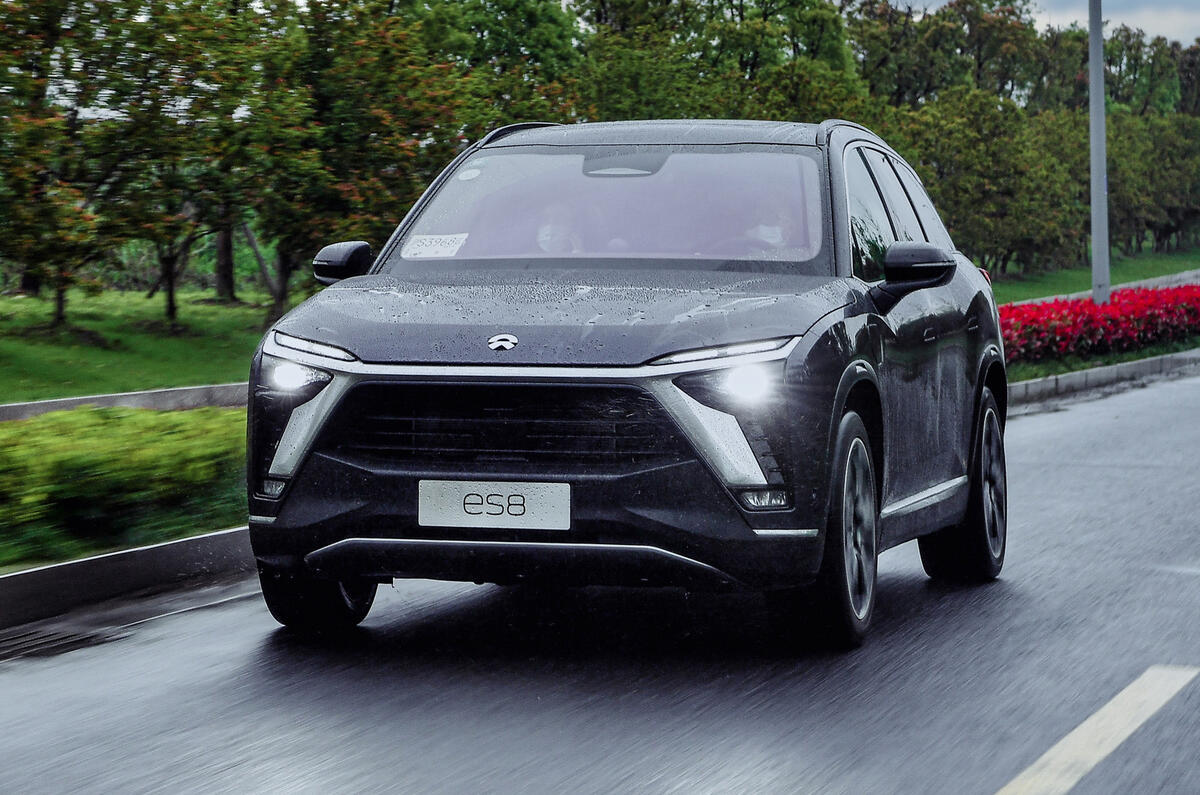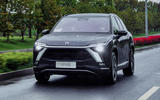What is it?
Few models exemplify the global nature of today’s car industry better than the Nio ES8. The first of four EVs from a Chinese firm that was established only in 2014 yet is now valued higher than BMW, this seven-seat SUV was developed by four ‘competence centres’ around the world: Shanghai conceived it, Munich styled it, Oxford engineered it and Silicon Valley coded its software.
At 5022mm long, 1962mm wide and 1756mm tall, it’s considerably larger than the Audi E-tron – just one of a number of premium EVs that Nio is targeting as it enters the European market via Norway this month. Unlike the E-tron, the ES8 is based on a dedicated EV platform. It hosts a big 100kWh battery and a body that’s 96% aluminium to weigh 2425kg.
Power comes from two motors supplied by NIO subsidiary XPT, driving all four wheels. Total output is put at 543bhp and 534lb ft, compared with 402bhp and 489lb ft for the E-tron in its 55 quattro guise.
The battery is estimated to yield a 311-mile range, beating that E-tron by 57 miles. It can be charged at a rate of only up to 90kW, compared with 350kW for its German rival, but Nio provides a clever alternative: the ES8’s battery can be swapped for a fully charged one in three minutes via a network of stations set to be built across five Norwegian cities. This also means the ES8 can always have the latest battery tech, not be stuck with what it had on delivery.































Join the debate
Add your comment
That's the first real EV solution I've heard and one which makes perfect sense.
When something new hits market it's always propriatry, that's to say manufacturers have unique products to themselves. Several years later, we end up with a standard that all manufacturers adhere to.
Now if all manufacturers used the same battery specs, you could in theory, drive in to a petrol station, the fossil fuelled cars would fill up at their pump and the EV's would simply swap their depleted battery for a fully charged one at their bay. It solves all the problems with on street parking and needing specific adapters and cables spread across the roads and overnight charging and... in effect it would be no different that how we fuel our cars today.
All it needs now is someone to set the standard. If you can't refuel an EV in say under 5mins then the tech is never going to be practical.
Start working from home! Great work for-Ever, Stay at Home Moms OR anyone needs an extra income. Get started. You only need a computer and a reliable computer connection so don’t get late try……. Fulwork.ml
It's a smart looking car, though I do wonder about not making it right hand drive due to cost. After all it's not only us that need RHD, what about Japan, India, Australia, New Zealand, South Africa ......